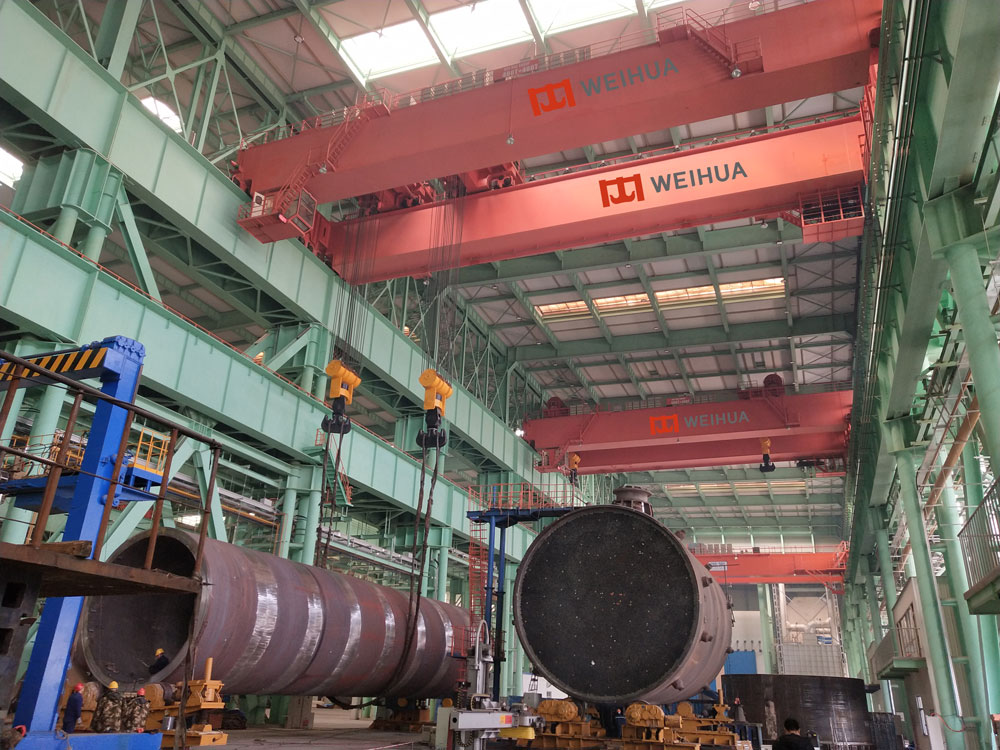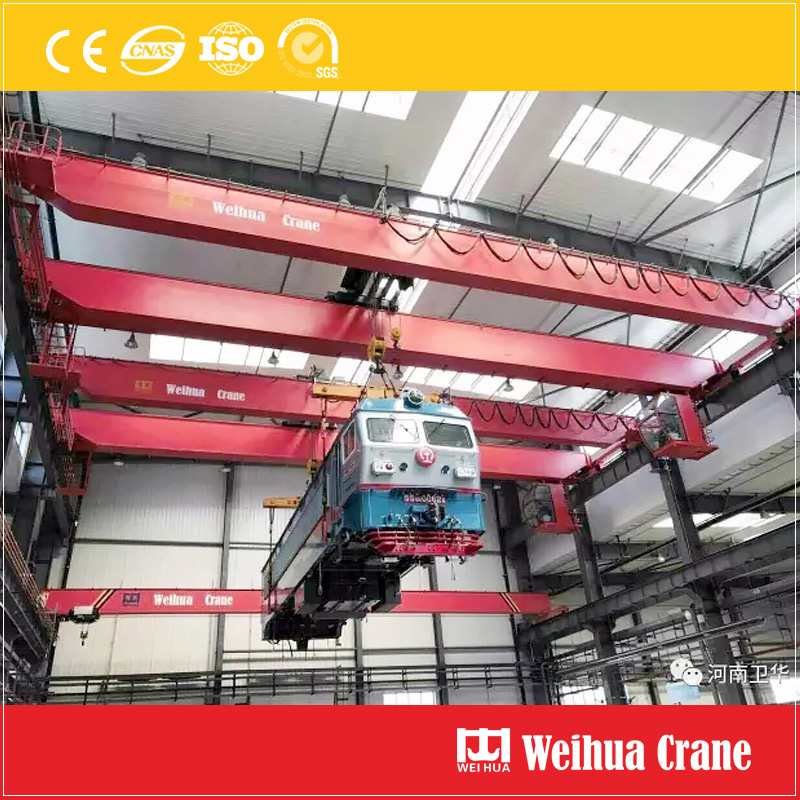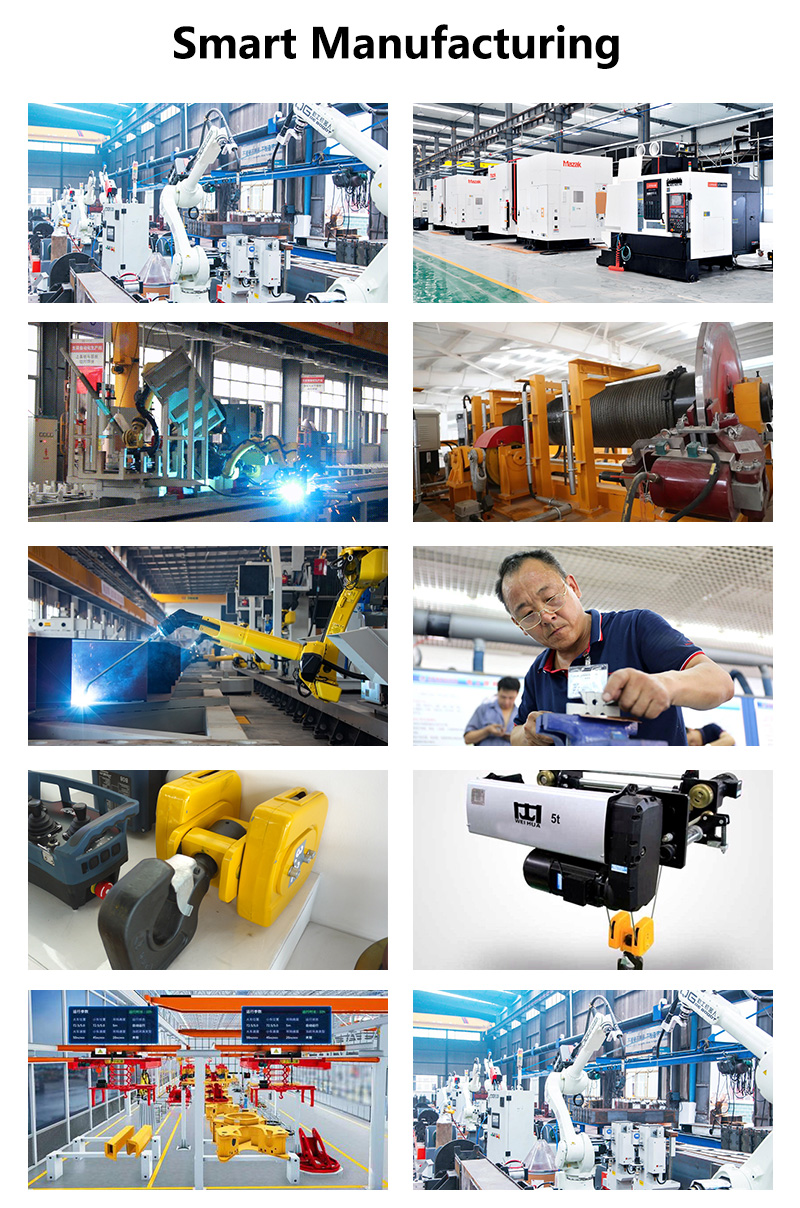اگر هر وقت را در یک کارخانه گذرانده اید, انبار, خانه کشتی, یا محیط صنعتی سنگین, تقریباً مطمئناً آنها را دیده اید: جرثقیل های بزرگ در سکوت در امتداد مسیرهای مرتفع می چرخند, با زحمت بارهای عظیم را بالا می برد. و اگر تا به حال به مشخصات نگاه کرده اید, سیاهههای نگهداری, یا اسناد تهیه, احتمالاً با مخفف EOT روبرو شده اید. اما EOT دقیقاً در دنیای جرثقیل چه معنی دارد?

EOT به سادگی مخفف جرثقیل مسافرتی سربار برقی است (گاهی اوقات به عنوان جرثقیل مسافرتی سربار برقی دیده می شود).
این یکی از رایج ترین و اساسی ترین انواع جرثقیل سربار در سطح جهان است. بیایید آنچه را که هر قسمت از آن نام نشان می دهد تجزیه کنیم:
1. برقی: این جرثقیل از برق تغذیه می شود, به طور معمول از طریق هادی هایی که در امتداد باند جرثقیل در حال اجرا هستند ، از منبع اصلی تسهیلات گرفته می شود (مانند اتوبوس ها یا سیستم های فستیونی). این قابل اعتماد است, تمیز, و قدرت قابل کنترل هم برای حرکت و هم برای بلند کردن.
2. بالای سر: جرثقیل عمل می کند بالای سر, به معنای ساختار اصلی آن است (پل) روی ریل های مرتفع اجرا می شود (پرتوهای باند) بر ستونهای پشتیبانی ساختمان یا یک ساختار پشتیبانی اختصاصی ثابت شده است. این طرح استفاده از فضای عمودی را به حداکثر می رساند و مساحت کف ارزشمند را برای سایر عملیات روشن نگه می دارد.
3. سفر (یا سفر): این به توانایی جرثقیل در حرکت افقی در باند فرودگاه آن اشاره دارد. این حرکت طولی (اغلب محور "x" نامیده می شود) یک ویژگی اصلی است که آن را از دستگاه های بلند کردن ثابت متمایز می کند.
جرثقیل EOT از سه مکانیسم اصلی حرکت تشکیل شده است:
پل: پرتوی افقی اصلی(حرف) که طول آن خلیج است. سفر می کند در امتداد ریل های باند (جنبش محور x).
بالابر و واگن برقی: سوار بر روی پل یک چرخ دستی است. چرخ دستی سفر می کند در سراسر پل (جنبش محور y). وصل شده به واگن برقی بالابر است - مکانیسمی که در واقع بلند می شود, کم کردن, و بار را حمل می کند (ارائه جنبش محور z).
باند: ریل های ثابت در ساختار ساختمان که کل جرثقیل بر روی آن نصب شده است (از طریق کامیون های انتهایی آن) سفر.
این ترکیب حرکات (x, حرف, Z) به یک جرثقیل EOT اجازه می دهد تا تقریباً کل منطقه مستطیل شکل را بپوشاند ("خلیج" یا "دهانه") زیر آن با دقت.

تطبیق پذیری: آنها دامنه عظیمی از ظرفیت های بار را اداره می کنند, از چند تن تا چند صد تن.
کارایی: حداکثر فضای کف را به حداکثر برسانید, جریان مواد ساده, و به طور قابل توجهی سرعت بارگیری/تخلیه و موقعیت یابی را در مقایسه با کار دستی یا جرثقیل های سیار در داخل خانه سرعت می بخشد.
دقت: کنترل های الکتریکی حرکات بسیار ریز و کنترل شده را امکان پذیر می کنند.
دوام: برای خواستار محیط های صنعتی و عمر طولانی با نگهداری مناسب طراحی شده است.
امنیت: هنگام نصب صحیح, کار شده, و حفظ شده, آنها راهی ایمن تر برای رسیدگی به بارهای سنگین در مقایسه با بسیاری از گزینه ها ارائه می دهند, کاهش خطرات دست زدن به دستی.


جرثقیل های مونوریل: به طور معمول یک مسیر ثابت داشته باشید (یک ریلی واحد) و یک بالابر که فقط در آن راه آهن حرکت می کند. انعطاف پذیر تر از پوشش کامل منطقه EOT.
جرثقیل های تحت فشار: مشابه EOTS, اما چرخ های پل روی آن اجرا می شوند فلنج پایین از تیرهای باند, اغلب اجازه می دهد تا اتاق نزدیکتر. آنها معمولاً از ظرفیت سبک تر هستند.
جرثقیل های گانی: اینها از نظر عملکرد مشابه هستند اما روی ریل یا چرخ ها اجرا می شوند در سطح طبقه, پشتیبانی شده توسط پاها. آنها اغلب در خارج از منزل مورد استفاده قرار می گیرند یا جایی که ساختار ساختمان نمی تواند از باند فرودگاه پشتیبانی کند. EOT به طور خاص است بالای سر وابسته.
جرثقیل های جیب: بازوهای ثابت یا چرخشی که به یک ستون دیوار یا کف نصب شده است, پوشش یک منطقه دایره ای یا نیمه دایره ای. پوشش محدود در مقایسه با EOT.
وقتی می بینید "جرثقیل EOT,"فکر کنید جرثقیل مسافرتی برقی. این استاندارد است, جرثقیل با برق که در باند فرودگاه های مرتفع حرکت می کند, بارهای متحرک دقیقاً در سراسر یک منطقه مستطیل شکل مشخص با استفاده از پل آن (x), واگن برقی (حرف), و بالابر (Z) حرکات. این کارآیی و بهره وری و بهره وری در صنایع بی شماری در سراسر جهان است..
ما برای بازخورد شما ارزش قائل هستیم! لطفاً فرم زیر را تکمیل کنید تا بتوانیم خدمات خود را متناسب با نیازهای خاص شما تنظیم کنیم.


برای به دست آوردن اطلاعات محصول و نقل قول های موجود در WhatsApp روی دکمه کلیک کنید.
نقل قول
آخرین نظرات